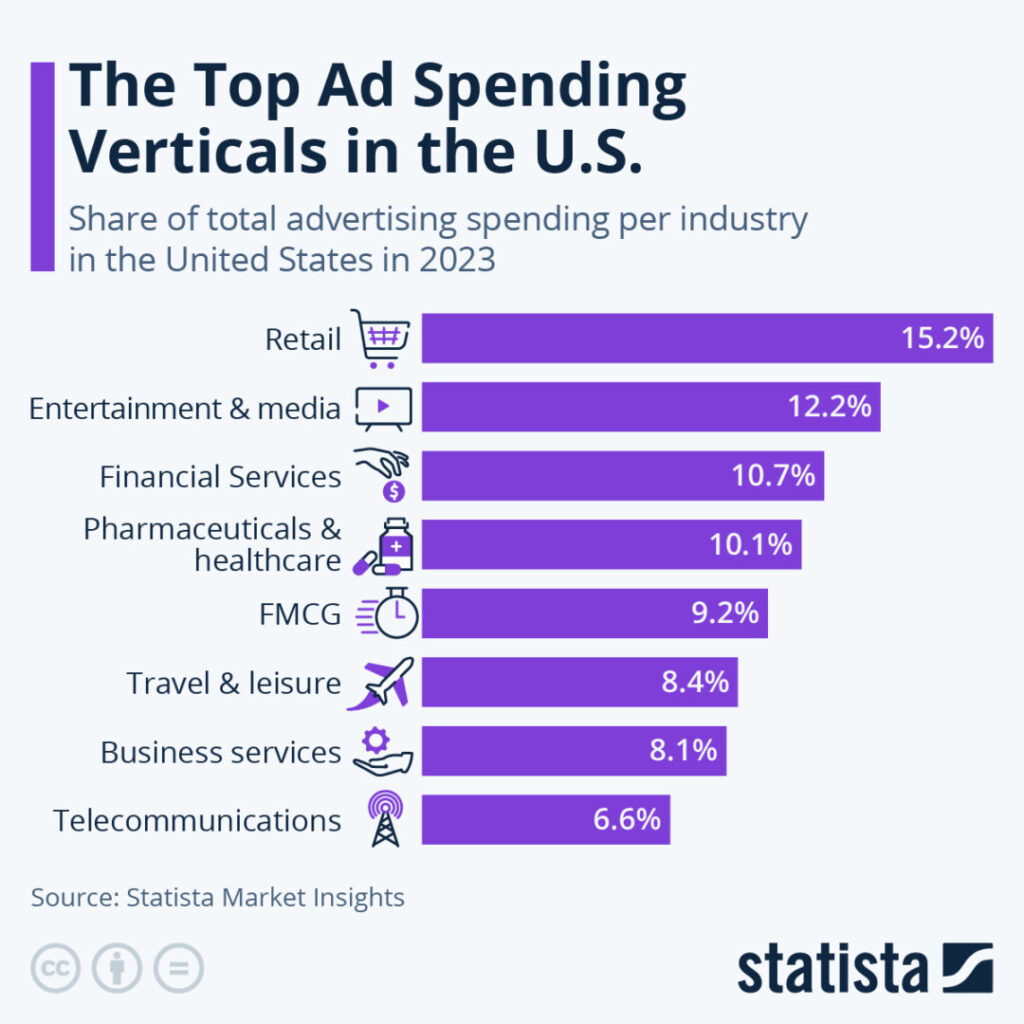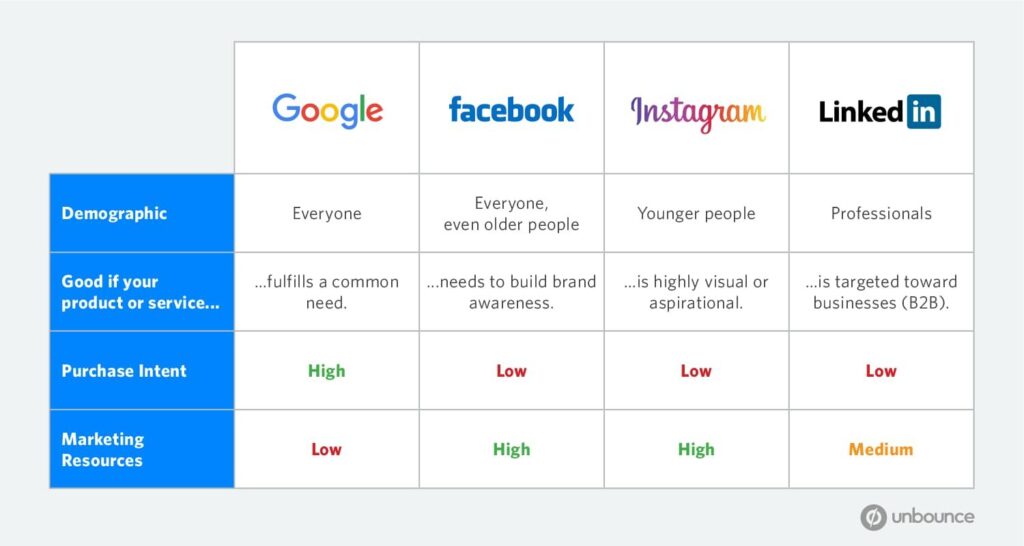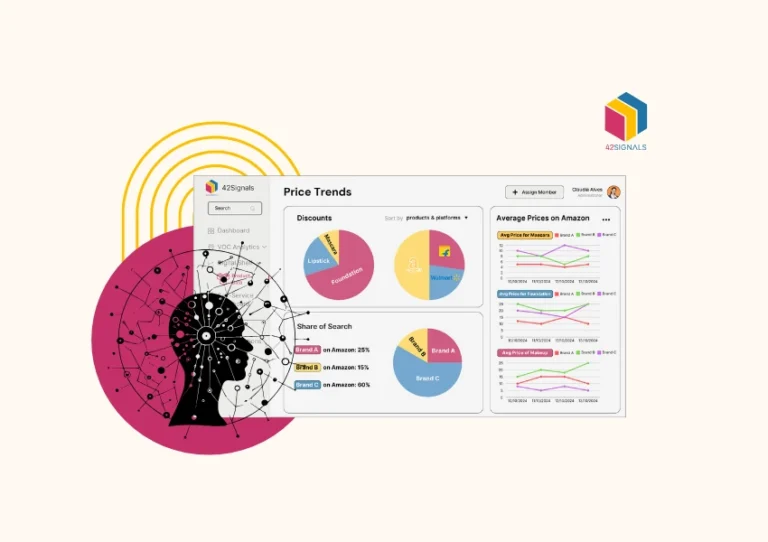In this fast-changing world of e-commerce, a well-defined ad spend strategy stands between you and your competitors. It is important to use your ad budget effectively in driving conversions, building brand loyalty, and eventually revenue growth—online shopping is increasingly becoming a habit.
The steps below will ensure you have a kick-ass ad spend strategy in your e-commerce business. There’s no one blueprint for building this model, though best practices abound. A clear ad spend strategy is essential for any company in a fast-changing marketplace.
It’s useful to remember that with the fast growth of online shopping, efficient allocation of advertising expenditure will be very important in driving conversions, securing repeat business, and building revenue.
Below is an article discussing all the important steps involved and related best practices for developing an ad spend strategy that fits your e-commerce business.

Source: Statista
What is Digital Shelf?
The digital shelf is where your products will be found, browsed, and bought online. Unlike their physical store counterparts, digital shelves are under constant assault by search algorithms, customer reviews, and changing consumer preferences. Optimizing your presence on this virtual shelf is important to maximize the effectiveness of ad spend.
Digital shelf analytics describe how well products rank and are visible in search, together with customer perception. First-page results for e-commerce searches produce up to 80% of those platforms’ sales, according to research. Using digital shelf analytics, you will be able to identify and fill gaps in your product listings with search-driven opportunities that are visibility-driven and sales-driven.
Example: Say you’re selling fitness equipment through Amazon, and you notice that your product is listed lower in search than some of the competition—tweaking the product descriptions, updating images, and creating ads targeted for the product are some ways that product could see increased visibility, driving more sales and providing a better return for your ad spend.
Setting Clear Objectives for Your Ad Spend
Setting clear, actionable objectives is key to having an effective ad spend strategy. Your goals need to be in line with the overall business goals: drive immediate sales, build brand awareness, or attain better customer loyalty.
Define Key Performance Indicators (KPIs) to measure success, such as:
- Return on Ad Spend (ROAS): Companies see an average ROAS of 4:1, meaning they earn $4 for every $1 spent on ads.
- Cost Per Acquisition (CPA): Indicates the cost of acquiring a new customer, with a lower CPA reflecting more efficient budget use.
- Customer Lifetime Value (CLV): Estimates the total revenue generated by a customer over time, helping you focus ad spend on high-value segments.
Clear objectives and KPIs ensure your ad spend aligns with business goals, driving measurable outcomes.
Crafting a Go-to-Market Plan
A go-to-market (GTM) plan is key to building a product launch and achieving sustainable, ongoing growth. Ad spending should be woven into your GTM plan so that all marketing communications are integrated and targeted. This is where a product marketing strategy plays a crucial role.
Do this through market research and buyer personas. According to HubSpot, companies with fully developed buyer personas can mark two times more increased conversion rates. Make sure to structure your messaging to address the different needs of your audience, and definitely—allocate ad spending wisely across awareness, consideration, and conversion.
As your business grows, keep revisiting and updating your plan to maintain an ad spend that remains efficient towards your goals.
Product Marketing Examples in the Real World
Extract these learnings from product marketing examples in the real world and base your ad spend strategy as follows:
Example 1: For a skincare brand, the niche was women aged between 25 and 35, interested in using natural products. With Ad Spend focusing attention on the specific public, it managed to drive 25% more conversions for every dollar spent and resulted in a 30% rise in ROAS.
Example 2: A home goods brand used storytelling to create an emotional connection with young families and first-time homebuyers, resulting in a 20% rise in brand awareness and a 15% uplift in sales.
These are prime product marketing examples of getting to know your audience and tailoring impactful campaigns accordingly.
Choosing the Right Platforms for Your Ads
Selecting the right ad platforms is crucial for maximizing your ad spend. Different platforms cater to various audiences and offer unique benefits:
- Google Ads: Ideal for capturing intent-driven searches, with an average conversion rate of 3.75% for search ads.
- Facebook and Instagram: Effective for reaching targeted demographics with personalized, visually appealing content. Facebook Ads have a 1.32% CTR, while Instagram boasts high engagement rates for visual products.
Consider factors like audience size and ad format options when choosing platforms. Tailor your approach to each platform to maximize engagement and ROI.

Source: Unbounce
Maximizing ROI with Targeted Campaigns
The campaigns should, given ROI, be highly targeted. Audience segmentation allows you to deliver the right message to specific audiences most likely to convert.
According to Epsilon, when brands offer personalized experiences, 80% of consumers are more likely to purchase. Segmentation based on demographics, behavior, or past interactions aids in creating relevant ads for audiences to achieve higher engagement and conversion rates.
For example, an outdoor gear retailer might split up its audience into “frequent campers,” “hikers,” and “fishing enthusiasts,” customizing ads for each to increase relevance and drive sales.
Optimizing Ad Spend Through Continuous Testing
It’s all about continual testing and optimization for a successful ad spend strategy. By A/B testing ad elements, looking at performance data, and making smaller changes to your ads over time, you start to be able to nail this down pretty well.
A/B Test: Run different versions of ads to detect which ad performs best to fine-tune what you have been doing.
Performance Analysis: Assess campaign effectiveness with KPIs like ROAS and CPA, and adjust of budget to best-performing platforms or strategies.
Iterative Adjustments: Make continuous alterations to targeting, bidding strategies, and creatives in a quest for better performance.
Invesp reports that optimizing your campaigns can result in a 14.2% lift in the average conversion rate for companies.
Leverage Data for Predictive Analysis
Leaning on predictive analysis, one can get insights into the future of projected customer behaviors while optimizing ad spend. This is a key component of any effective product marketing strategy.
Budgeting was made more effective under predictive analysis in the way it measured past performance, consumer behavior, and market trends, adjusting bids in real-time. For instance, an e-commerce business can predict which items will be in high demand in their brand during the festive season and focus their ad spend on those items in particular.
Forester says that well up to a 20% increase in revenue is realized by companies that utilize predictive analysis in their marketing strategies, and this is a clear indication of how it adds value to their ad spend efficiency.
Conclusion on Ad Spend
Developing a smart ad spend strategy for your e-commerce business involves understanding the digital shelf, setting clear objectives, crafting a comprehensive go-to-market plan, and choosing the right platforms. By learning from successful product marketing examples, continuously optimizing your campaigns, and leveraging digital shelf analytics and predictive analysis, you can maximize ROI and achieve sustained growth.
To further elevate your strategy, consider using 42signals, an advanced e-commerce analytics tool that provides insights into digital shelf analytics, product trends, and customer behavior. Sign up for 42Signals today to optimize your ad spend and drive better results for your e-commerce business.





